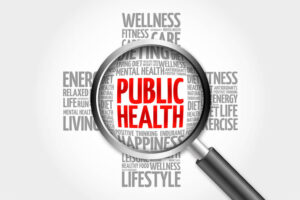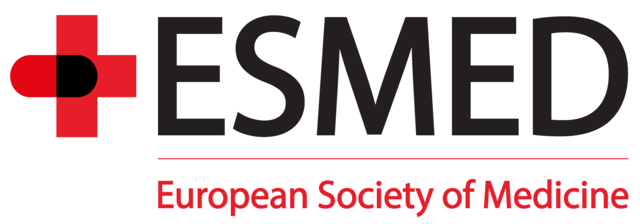SPECIAL ISSUE
Advancements in Diabetes
CLINICAL RESEARCH ARTICLES
Maria Luz Fernandez1, Ana Gabriela Murillo2
1Department of Nutritional Sciences, University of Connecticut, Storrs, CT, USA
2Department of Biochemistry, University of Costa Rica, San José, Costa Rica
Abstract
John Malone
Abstract
Diabetes Mellitus, prolonged hyperglycemia, causes peripheral and central nervous system dysfunction. Chronic hyperglycemia causes changes in the sorbitol, inositol and taurine content of peripheral and central nervous system tissue. The proteins in these tissues are also altered by glycosylation end products. The changes in metabolites impair growth and development of nerves and the increased glycosylation end products make the proteins stiff, sticky and prone to physical injury. This activity stimulated by hyperglycemia impairs the normal function of the peripheral and central nervous system. Manifestations of this tissue injury have been loss of sensation and increased pain in the extremities, loss of proprioception when standing, dysregulation of gastrointestinal motility, and heart rate. Also noted in children are delayed maturation of cognitive function during childhood and more rapid decline of cognitive function with increasing age and increasing HbA1c.
Sleep apnea has become an important cause of heart failure and death commonly linked to type 2 diabetes and obesity. Continuous pressure airway pressure (CPAP) does overcome the periods of obstruction and prevents the morbidity associated with obstructive sleep apnea (OSA). Forty-Six percent of type 1 diabetic patients have absence of effort sleep apnea which means it is a central lack of drive to breath. There is evidence of change of structure in the medulla of subjects with type 1 diabetes as well as evidence of injuries in the medulla that cause cessation of breathing. These observations indicate that central neuropathy caused by hyperglycemia does cause central sleep apnea and possibly death.
Enrique C. Morales-Villegas1, Luis A. Alcocer-Diaz-Barreiro2, Gualberto Moreno-Virgen1
1 Cardiometabolic Research Center-MAC Hospital. Aguascalientes, México.
2Mexican Institute of Cardiovascular Health.
Abstract
- a) In HT patients with blood pressure (BP) <150/90 mmHg, AZL 40 mg as monotherapy provides practically 100% success to achieve a target BP <140/90 and <130/80 mmHg, in a subpopulation that we have called “hyper-responders”
- b) In HT patients with BP <150/90 mmHg (naive or with another treatment failure), AZL/CLD 40/12.5 mg provides practically 100% success to achieve a target BP <140/90 mmHg and 90% to achieve a target BP <130/80 mmHg;
- c) In HT patients with BP >150/90 mmHg (generally with another treatment failure), AZL/CLD 80/12.5 mg gives women a success rate greater than 60% to achieve a target BP <140/90 mmHg and greater than 50% to achieve a target BP <130/80 mmHg. The success rates were higher in men, greater than 75% to achieve a target BP <140/90 mmHg and greater than 60% to achieve a target BP <130/80 mmHg. In both cases, the use of amlodipine (2.5, 5, or 10 mg) made it possible to achieve a target BP <140/90 mmHg in 100% of the cases and <130/80 mmHg in 80% of the cases.
Finally, according to our results, we propose a simple three-step strategy based on evidence, personalization, and empowerment which allows reaching a target BP <140/90 mmHg in more than 90% of cases and a target BP <130/80 mmHg in more than 75% of cases in 4 to 12 weeks.
Jorge Ruiz-Medrano1,2Lucia Gonzalez-Buendia1,2José M Ruiz-Moreno1,2,3
1Department of Ophthalmology, Puerta de Hierro-Majadahonda University Hospital, Madrid (Spain).
2Instituto de Microcirugía Ocular (IMO). Madrid; VISSUM. Alicante (Spain).
3Department of Ophthalmology, Castilla La Mancha University, Albacete (Spain).
Abstract
Diabetic macular edema (DME) is the most common cause of vision loss in diabetic patients. Multiple therapeutic options are currently available for these patients, including laser photocoagulation; intravitreal injections of anti-vascular endothelial growth factor (VEGF) drugs or steroids; or pars plana vitrectomy for tractional DME. The initial treatment for DME is well-defined and widely accepted, with anti-VEGF as first-line option. Nevertheless, between 30 and 40% of patients show partial response or no response whatsoever. There is no consensus on the number of injections needed in order to classify a patient as a non-responder or sub-optimal responder, nor on the definition of the latter. In this study, these concepts are analysed as well as the different therapeutic alternatives at hand, with special interest on the switch between different anti-VEGF and/or steroids. These analyses are performed from an anatomical and functional point of view as well as from an economic, cost-effectiveness perspective. Recent evidence suggests that an early switch to dexamethasone implant in eyes that did not respond adequately to anti-VEGF therapy after 3 injections provides better functional outcomes while alleviating the heavy economic burden of this disease.




